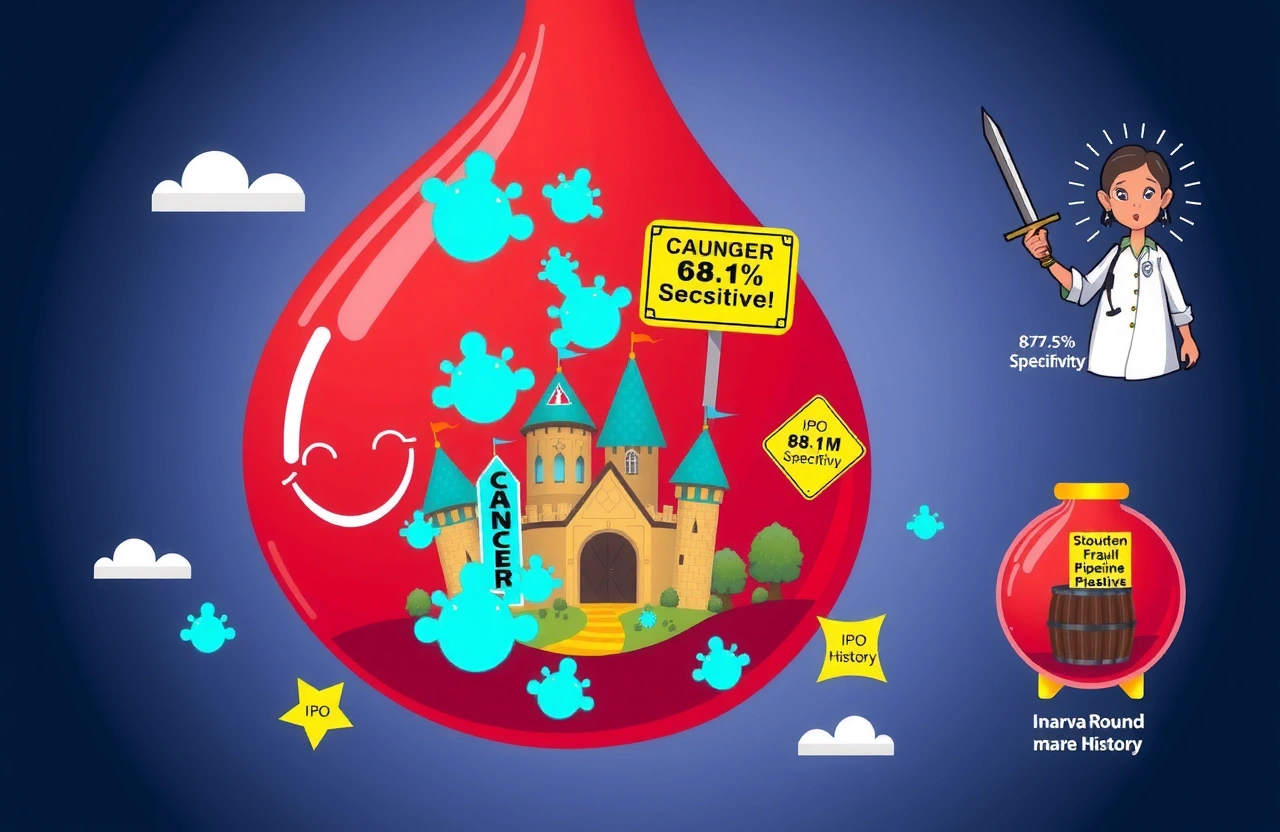The Science Behind the Blood Test for Cancer Screening
miRNA Technology Foundations
Mirxes’ core technology builds on Nobel Prize-winning research by American scientists Victor Ambros and Gary Ruvkun, who discovered microRNA (miRNA) in the 1990s. These tiny RNA molecules regulate gene expression and serve as biological markers when abnormalities occur. The company’s GASTROClear test analyzes miRNA patterns in just 5ml of blood to detect early-stage stomach cancer with 87.5% sensitivity. This means it correctly identifies 87 out of 100 actual cancer cases.
Distinguishing From Past Failures
Unlike Elizabeth Holmes’ fraudulent Theranos “blood test for cancer screening” scheme, Mirxes employs clinically validated methodology. Their approach differs fundamentally: – Uses established miRNA biomarkers – Undergoes rigorous regulatory review – Publishes peer-reviewed clinical data – Avoids proprietary “black box” technology
Commercialization Challenges for GASTROClear
Pricing and Accessibility Barriers
Priced at $150-250 per test, Mirxes’ blood test for cancer screening costs significantly more than traditional endoscopy ($80-200). This positions it as a premium screening tool rather than mass-market solution. Without insurance coverage, adoption remains limited to affluent consumers despite the convenience advantage of blood-based testing.
Accuracy Concerns and False Positives
The test’s 68.4% specificity rate presents clinical challenges. In practical terms: – 32 out of 100 healthy people receive false positive results – Patients must undergo confirmatory endoscopy anyway – Consumer hesitation persists despite non-invasive appeal One potential user told Phoenix Finance: “If I get a positive result, I’d still need an endoscopy to confirm. Why not start with that? I’d only consider the blood test if it cost under $200.”
Funding Journey and IPO Imperatives
Major Investment Milestones
Mirxes attracted significant backing from prominent investors: – Sun Tongyu (孙彤宇), former Taobao president, invested $30M in 2018 and holds 22.03% stake – 2021’s $87M Series C included China Resources, CICC International, and Rock Springs Capital – 2023’s $50M Series D featured Mitsui & Co. and Novo Holdings
Capital Crunch Timeline
With just $261,250 cash reserves by March 2025, Mirxes faces urgent funding needs: – 2024 revenue fell 16% to $20.28M – Losses expanded 33% to $92.2M – Current IPO aims to raise $88.1M (covering ~18 months of operations) The Hong Kong listing comes amid sector headwinds, with peers like Burning Rock and Genetron facing stock collapses and delistings.
Pathway to Sustainable Profitability
Pipeline Development Challenges
Mirxes’ product pipeline remains years from commercialization: – Only GASTROClear is market-ready – Lung cancer (LUNGClear) and breast cancer (BC-1) tests in early stages – Multi-cancer CADENCE test still in development This narrow product focus increases dependence on GASTROClear’s success while requiring continuous R&D investment (94% of revenue in 2024).
Healthcare System Integration Hurdles
China’s national cancer screening framework presents structural barriers: – No insurance reimbursement for preventive screening – Government-led healthcare prioritizes treatment over prevention – National Medical Insurance Administration explicitly excluded cancer screening in 2024 Without systemic support, Mirxes must build consumer-paid market demand from scratch while competing against established diagnostic methods.
Market Education and Adoption Strategies
Consumer Perception Hurdles
The company faces dual challenges in market education: – Overcoming skepticism from Theranos’ fraudulent “blood test for cancer screening” legacy – Explaining complex miRNA science to non-medical audiences – Managing expectations about test limitations Marketing must emphasize: – Peer-reviewed validation – Transparent performance metrics – Appropriate use cases
Strategic Partnerships and Channels
Successful commercialization requires: – Hospital laboratory partnerships for LDT model – Direct-to-consumer marketing for IVD version – Corporate wellness program integrations – Pharma collaboration for drug development companion diagnostics
Investor Considerations and Future Outlook
Critical Risk Factors
Prospective investors should weigh: – Regulatory approval delays (China’s NMPA decision pending since 2023) – Cash runway limitations despite IPO proceeds – Intense competition from domestic players like Novogene – High operating costs (226% administrative expense ratio)
Long-Term Industry Potential
Despite current challenges, the cancer screening market offers substantial upside: – Global liquid biopsy market projected to reach $28B by 2030 (Grand View Research) – China’s cancer incidence rates continue rising – Aging populations increase screening demand Mirxes’ success hinges on: – Achieving regulatory approval in Q3 2025 – Reducing production costs – Expanding to Southeast Asian markets – Developing complementary screening products
Navigating the Crossroads of Innovation and Viability
Mirxes stands at a pivotal moment as it transitions from development-stage biotech to commercial entity. The company’s blood test for cancer screening represents genuine scientific advancement, yet faces significant commercialization barriers including pricing sensitivity, accuracy concerns, and healthcare system limitations. With accumulated losses exceeding $218M since 2022 and urgent capital needs, the IPO provides essential funding but not guaranteed salvation. Investors should scrutinize post-listing milestones including regulatory approvals, sales growth, and path to profitability. For consumers, the promise of accessible cancer screening through a simple blood test remains compelling, but widespread adoption requires both affordability improvements and healthcare system support. Track Mirxes’ regulatory progress through Hong Kong Stock Exchange filings and consult medical professionals about appropriate screening options.



